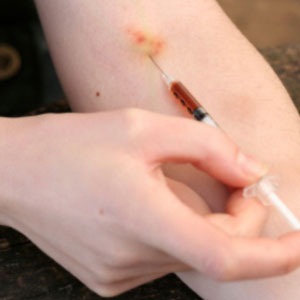A biopsy is a sample of tissue taken from the body in order to examine it more closely. A doctor should recommend a biopsy when an initial test suggests an area of tissue in the body isn’t normal. Doctors may call an area of abnormal tissue a lesion, a tumor, or a mass.
An abscess is a collection of pus that has built up within the tissue of the body signs and symptoms of abscesses include redness, pain, warmth, and swelling. The swelling may feel fluid-filled when pressed. The area of redness often extends beyond the swelling.
At Ruby Hall clinic these procedures are done regularly as office procedures without hospitalization.
An abscess is a localized collection of purulent fluid that can have a significant impact on the care and clinical outcome of a patient. It is at times a relatively benign event, potentially treatable with antibiotic medication alone. However, not uncommonly, abscess formation can be a life-altering event if it leads to sepsis, a spectrum of severe systemic illness resulting from hematogenous spread of infection and an important cause of morbidity and mortality.

An abscess is an infected fluid collection within the body. Percutaneous abscess drainage uses imaging guidance to place a needle or catheter through the skin into the abscess to remove or drain the infected fluid. It offers faster recovery than open surgical drainage.
biopsy and abscess drainages are some of the most commonly performed procedures in interventional radiology. With advances in targeted therapies for oncology patients, physicians increasingly depend on the experience and skill of the interventional radiologist to acquire tissue specimens from body organs. Furthermore, percutaneous drainage of fluid collections has largely reduced the need for surgical interventions for infected deep-lying body collections.
Percutaneous abscess drainage and percutaneous biopsy are safe, effective, and widely used techniques for the diagnosis and treatment of patients with neoplastic disease or sepsis. Indeed, modern interventional radiology techniques and equipment allow image-controlled procedures. However, the increasing number and complexity of procedures mandate careful patient assessment, a close examination of periprocedural factors, and judicious procedure selection to maximize patient benefit and minimize adverse outcomes. This presentation focuses primarily on techniques for the percutaneous access and drainage of difficult or complex abdominopelvic collections, but many of the techniques are applicable to percutaneous biopsy of lesions that are difficult to access because of the absence of a percutaneous window. We will discuss several image-guided techniques and modifications that allow percutaneous biopsy and drainage of poorly accessible lesions.
